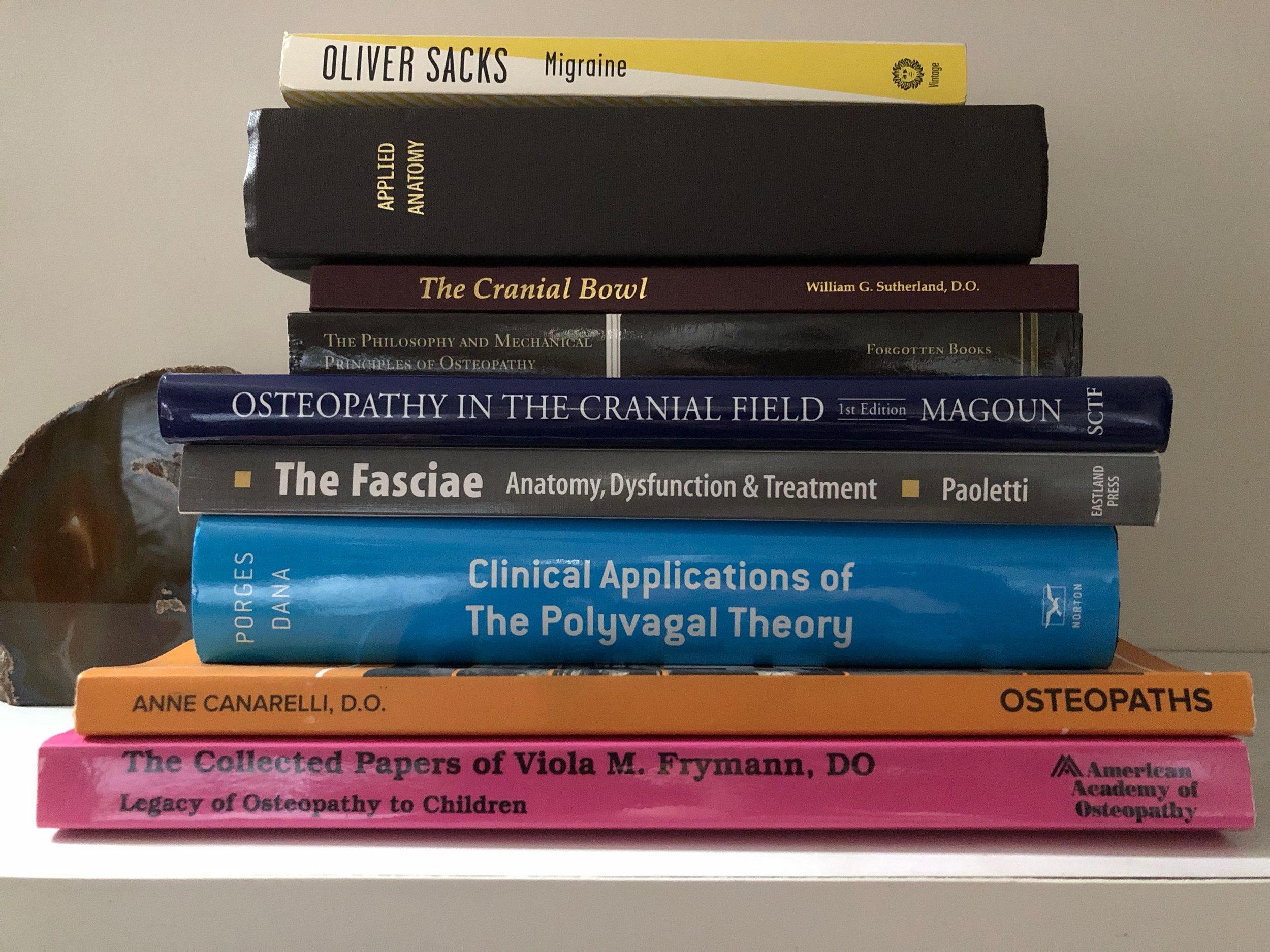You will find that the task of defining or explaining osteopathy is quite a difficult one. In short, osteopathic assessment aims to discover the primary or root cause(s) of the dysfunction at hand, by taking in as many factors in as possible. This involves looking at the person as a whole, and taking into account their history and previous life experience, as well as daily practices, etc. Osteopathic treatment involves not only manual therapeutic touch to reduce restrictions and create balance in the body, but aims to educate on best practices to enhance our bodies ability to achieve and maintain health on its own.
The four key principles of osteopathy philosophy are:
Structure and function are interdependent: the position, mobility, quality and vitality of a tissue, whether it belongs to the musculoskeletal system (muscle, bone, ligament) or it is an internal organ (liver, kidney, lung, etc), have a direct correlation to it’s ability to perform its designated function and relate with the rest of the components it communicates with.
The rule of the artery is absolute: the healthy, optimal physiological circulation of all fluids in the body, whether it be blood, lymphatic fluid, intracellular fluid, cerebrospinal fluid, etc , is vital to the function of each part of the body and therefore the body as a whole
The body is a functional unit: not one tissue, muscle, organ, or system of the body acts alone; each is interdependent on those that it has anatomical or physiological relationships with.
Based on the three prior principles, if all physiology is free to express itself without restriction to its full potential, there exists an innate system of autoregulation in the body, by which health and healing are present and uninhibited.
Though the term may suggest the “study of bones”, Osteopathy at its core is so much more than that, dealing with every system of the body and how integral the anatomical and functional relationships between them were. This included not only the musculoskeletal system, but also the cranio-sacral system, the fascial network, visceral (internal organ) systems, as well as the circulatory, endocrine (hormonal) lymphatic and nervous systems.The goal of osteopathic treatment is to thoroughly assess the body in order to find the cause or root of each individuals unique dysfunction(s). This is done through a comprehensive assessment, familiarization of medical history and the use of orthopaedic and osteopathic tests which give a sense of the position, mobility, quality, and vitality of various tissues in the body.
It was founded in the late 1800’s by Andrew Taylor Still, an M.D. looking for a new perspectives on health issues that he and medicine itself was having trouble treating appropriately. Though medical approaches handled acute and life-threaten issues extremely well, he noticed that more chronic and subtle disturbances were overlooked and thus not treated effectively. He studied 5 years of mechanical engineering while also witnessing the work of Indigenous Peoples along the Missouri River, developing an intense passion for understanding further anatomy and physiology. He developed a new set of principles with regards to the dysfunction of the human body that he eventually collectively termed, Osteopathy. It has been said, though difficult to find proper evidence in the literature, that the founder of chiropractics, D.D. Palmer, was one of the first students under Andrew Taylor Still, but went on to develop a separate system of practice that focused more on a purely musculoskeletal perspective.
In osteopathic treatment, sometimes subtle or very gentle but powerful techniques are used to assess and affect the mobility and quality of the tissues and the fascia that envelope them, and act to stimulate the body’s natural ability to heal itself (autoregulation). This is done through working with the body rather than against it. The detailed assessment techniques look beyond symptoms and pinpoint the source of the problem, rather than chasing symptoms or temporary relief. In essence, the goal of osteopathic work is remove specific restrictions that have built up over time, in order to allow the body to do what it is innately able to do; express health.
THINGS OSTEOPATHIC TREATMENT CAN HELP
Ensure optimal infant development by addressing root causes of:
delayed motor milestones (rolling, crawling, pulling to stand, walking)
latching difficulties (nursing pain, shallow latch, slipping off the breast, inconsistent feed times, etc)
rotational head preference / torticollis and associated plagiocephaly (head shape concerns)
sleep disturbances or difficulties
gastrointestinal disturbances (gassiness, fussiness, colic, loud/explosive poops, constipation, discomfort)
Headaches, including migraines, tension/cervicogenic headaches
Sinusitis (chronic), or general sinus-related issues
Sleep disorder breathing, sleep apnea, snoring
Various discomforts related to pregnancy (prenatal care and postnatal care)
Infertility/gynecological issues
TMJ (Jaw) dysfunction and/or face pain
Digestive conditions; IBS, heartburn (acid reflux), general indigestion, constipation
Low back and neck pain
Acute and chronic muscle aches and pains
Sport injuries or acute trauma
Whiplash injuries associated with car accidents and sport injuries
Fibromyalgia and chronic pain
Arthritic pain, including pain associated with rheumatoid and psoriatic arthritis
Allergies/autoimmune disorders including asthma, digestive sensitivities and intolerances
Stress, depression, and chronic fatigue
Tinnitus, vertigo
OTHER GREAT ONLINE RESOURCES FOR MORE INFORMATION ON OSTEOPATHY
Ontario Association of Osteopathic Manual Pracitioners: http://www.osteopathyontario.org/about-osteopathy
Canadian College of Osteopathy: http://www.osteopathy-canada.com/osteopath-definition/
Canadian Federation of Osteopaths: https://www.osteopathy.ca/what-is-osteopathy/
Annex Osteopathy: http://annexosteopathy.com/services/
Steve Paulus, DO, MS: http://www.stevepaulus.com/Office_Website/Osteopathy.html

